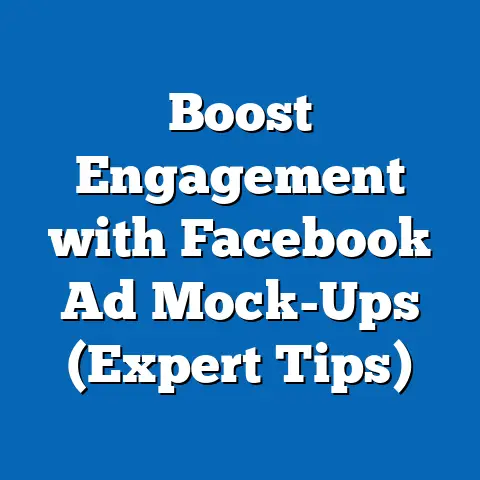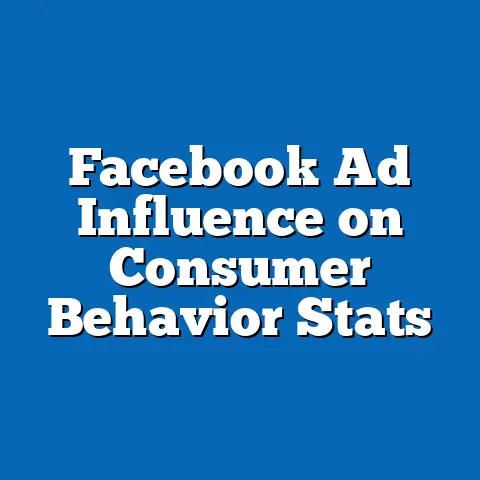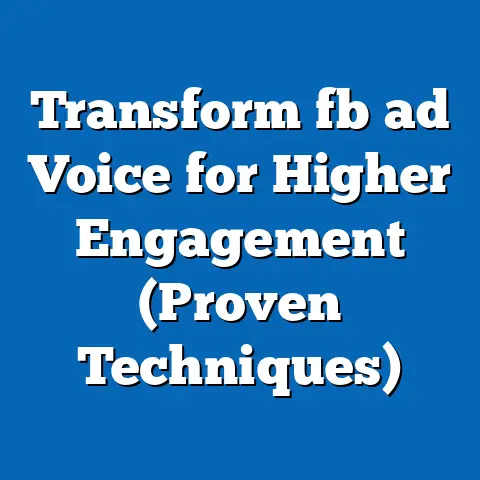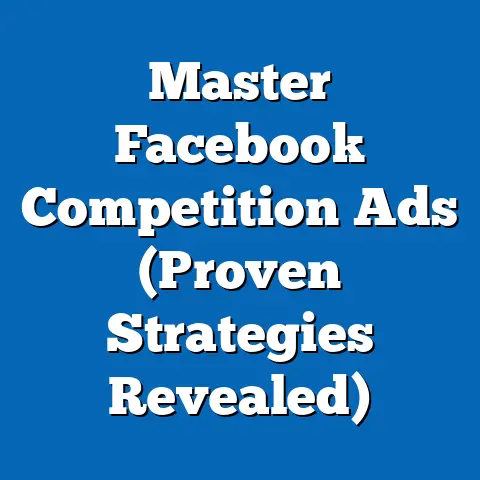Maximize Impact with Ideal Facebook Ad Sizes (Pro Tips)
Did you know that visual content is 40 times more likely to be shared on social media than other types of content? That’s a staggering statistic, and it underscores the critical importance of visuals in digital advertising, especially on a platform as visually driven as Facebook. Getting your Facebook ad sizes right isn’t just about aesthetics; it’s about ensuring your message is seen, understood, and acted upon.
I’ve spent years crafting and optimizing Facebook ad campaigns, and I can tell you firsthand that ad size is a detail you can’t afford to overlook. I remember one campaign for a local bakery where we completely revamped their ad visuals to meet the ideal dimensions. The result? A 150% increase in click-through rates! It was a game-changer.
Understanding Facebook Ad Formats
Facebook offers a diverse range of ad formats, each designed to achieve specific marketing objectives and engage audiences in unique ways. Understanding these formats is the first step in creating effective campaigns.
- Image Ads: These are the simplest and most common type of Facebook ad. They feature a single image, headline, and description. They’re great for quickly conveying a message and driving traffic.
- Video Ads: Video ads are highly engaging and can be used to tell stories, showcase products, or provide tutorials. They can appear in the news feed, in-stream, or as stories.
- Carousel Ads: Carousel ads allow you to display multiple images or videos within a single ad. Each image or video has its own headline, description, and link, making them perfect for showcasing a range of products or highlighting different features of a single product.
- Slideshow Ads: Slideshow ads are similar to video ads but use a series of still images to create a video-like experience. They’re a cost-effective way to create engaging content without the expense of video production.
- Collection Ads: Collection ads are designed for e-commerce businesses. They feature a cover image or video followed by a selection of products that users can browse and purchase directly from the ad.
- Stories Ads: These are full-screen, vertical ads that appear between users’ stories. They’re ideal for capturing attention and driving quick actions, such as visiting a website or watching a video.
Choosing the right ad format depends heavily on your business goals. Want to build brand awareness? Video ads and slideshow ads can be incredibly effective. Aiming for direct sales? Carousel ads and collection ads are your best bet. Generating leads? Image ads with a clear call-to-action can work wonders.
Takeaway: Familiarize yourself with the different Facebook ad formats and choose the one that best aligns with your marketing objectives.
The Importance of Ad Dimensions
Why does ad size matter so much? Well, several factors come into play:
- User Experience: Ads that are correctly sized provide a seamless and enjoyable experience for users. Imagine seeing a stretched or distorted image – it immediately looks unprofessional and detracts from your message.
- Visibility: Facebook’s algorithm favors ads that meet the recommended size specifications. This means your ads are more likely to be shown to a larger audience and placed in prominent positions.
- Engagement Rates: Well-sized ads are more visually appealing and less likely to be overlooked. This leads to higher click-through rates, conversion rates, and overall engagement.
Facebook uses a responsive design system, which means your ads need to adapt to different screen sizes and devices. An ad that looks perfect on a desktop might appear cropped or distorted on a mobile phone if it’s not properly sized. Getting the dimensions right ensures your ads look great no matter where they’re viewed.
Takeaway: Ad dimensions are crucial for user experience, visibility, and engagement. Make sure your ads are properly sized to take full advantage of Facebook’s algorithm and responsive design.
Ideal Facebook Ad Sizes for Different Formats
Now, let’s get down to the specifics. Here’s a comprehensive list of the ideal ad sizes for each Facebook ad format:
Image Ads
- Recommended Size: 1200 x 628 pixels
- Aspect Ratio: 1.91:1
- Minimum Width: 600 pixels
- Text Ratio: Facebook recommends that images contain less than 20% text to avoid reduced delivery.
Video Ads
- Recommended Size: 1280 x 720 pixels (720p)
- Aspect Ratio: 16:9 (horizontal) or 9:16 (vertical for Stories and Reels)
- Minimum Resolution: 720p
- Maximum File Size: 4GB
- Video Length: Varies depending on placement, but shorter videos (15-30 seconds) tend to perform best.
Carousel Ads
- Recommended Image Size: 1080 x 1080 pixels
- Recommended Video Size: 1080 x 1080 pixels
- Aspect Ratio: 1:1 (square)
- Minimum Number of Cards: 2
- Maximum Number of Cards: 10
Collection Ads
- Recommended Image Size: 1200 x 628 pixels (for the cover image)
- Recommended Video Size: 1200 x 628 pixels (for the cover video)
- Aspect Ratio: 1.91:1 (for the cover image/video)
- Product Images: Use high-quality images with a consistent style.
Slideshow Ads
- Recommended Image Size: 1280 x 720 pixels
- Aspect Ratio: 16:9, 1:1, or 2:3
- Video Length: Up to 15 seconds
Stories Ads
- Recommended Size: 1080 x 1920 pixels
- Aspect Ratio: 9:16 (full-screen vertical)
- Minimum Width: 500 pixels
- Maximum File Size: 4GB (for videos)
Desktop vs. Mobile Placements: While the recommended sizes are generally the same for both desktop and mobile, it’s essential to consider how your ads will appear on smaller screens. Pay attention to text size and image clarity to ensure your message is easily readable on mobile devices.
Takeaway: Use this table as your go-to reference for ideal Facebook ad sizes. Always aim for the recommended dimensions to ensure your ads look their best and perform optimally.
Pro Tips for Designing Ads
Creating visually appealing ads that fit within the ideal sizes is both an art and a science. Here are some pro tips I’ve learned over the years:
- Use High-Resolution Images and Videos: This is non-negotiable. Blurry or pixelated visuals will immediately turn off potential customers. Invest in professional photography or videography, or use high-quality stock images.
- Maintain Brand Consistency: Your ads should be instantly recognizable as belonging to your brand. Use your brand colors, fonts, and logos consistently across all your ads.
- Optimize Text-to-Image Ratio: Facebook has strict guidelines about the amount of text you can include in your ad images. Aim for less than 20% text to avoid reduced delivery. Use Facebook’s Text Overlay Tool to check your images before uploading them.
- Effective Use of Whitespace and Layout: Don’t overcrowd your ads with too much information. Use whitespace strategically to create a clean, uncluttered look that draws attention to your key message.
- Mobile-First Design: Given that most Facebook users access the platform on their mobile devices, design your ads with mobile in mind. Use larger fonts, clear calls-to-action, and visuals that are easily viewable on smaller screens.
- Consider the Placement: Think about where your ad will be displayed. Ads in the news feed have different requirements than ads in stories or in-stream videos. Tailor your design to the specific placement.
Takeaway: Follow these pro tips to create visually appealing and effective Facebook ads that grab attention and drive results.
Testing and Iterating for Success
No matter how well you design your ads, it’s crucial to test and iterate to find what works best for your specific audience. Here’s how to approach testing:
- A/B Testing Different Ad Sizes and Formats: Experiment with different ad sizes and formats to see which ones resonate most with your target audience. For example, try running a carousel ad alongside a single image ad to compare their performance.
- Track Performance Metrics: Use Facebook’s Ad Manager to track key performance metrics, such as click-through rate (CTR), conversion rate, cost per click (CPC), and return on ad spend (ROAS). These metrics will give you valuable insights into the effectiveness of your ads.
- Analyze and Optimize Over Time: Continuously analyze your ad performance and make adjustments based on the data. If you notice that a particular ad size or format is underperforming, try tweaking the design, copy, or targeting.
- Use Facebook’s Ad Manager Tool: Facebook’s Ad Manager is a powerful tool for creating, managing, and analyzing your ad campaigns. Use it to track your ad performance, identify areas for improvement, and make data-driven decisions.
- Don’t Be Afraid to Experiment: The world of Facebook advertising is constantly evolving, so don’t be afraid to try new things. Experiment with different ad sizes, formats, and design elements to see what works best for your brand.
I recall a time when I was running a campaign for an e-commerce client selling apparel. We initially focused on square carousel ads, but after running A/B tests with vertical video ads in stories, we discovered that the video ads generated a significantly higher ROAS. We shifted our budget allocation accordingly, and the campaign’s overall performance soared.
Takeaway: Testing and iteration are essential for optimizing your Facebook ad campaigns. Use data to make informed decisions and continuously improve your ad performance.
Future Trends in Facebook Advertising Sizes
The world of Facebook advertising is constantly evolving, and ad sizes and formats are no exception. Here are some emerging trends to keep an eye on:
- Augmented Reality (AR) Ads: AR ads are becoming increasingly popular, allowing users to interact with virtual objects and experiences directly within the Facebook app. These ads require specific dimensions and design considerations to create immersive experiences.
- Immersive Experiences: Facebook is investing heavily in immersive experiences, such as 360-degree videos and interactive ads. These formats require unique dimensions and design elements to create engaging and memorable experiences.
- Vertical Video Dominance: With the rise of TikTok and other vertical video platforms, vertical video ads are becoming increasingly important on Facebook. Make sure you’re creating high-quality vertical video content for your Facebook ad campaigns.
- Personalization and Customization: As Facebook’s ad targeting capabilities become more sophisticated, expect to see more personalized and customized ad experiences. This will likely lead to the need for more flexible ad sizes and formats that can adapt to individual user preferences.
To stay ahead, brands need to be adaptable and maintain flexibility in their ad design. Keep experimenting with new formats and sizes, and always be on the lookout for emerging trends.
Takeaway: Stay informed about emerging trends in Facebook advertising sizes and formats, and be prepared to adapt your strategies accordingly.
Conclusion
In conclusion, using the ideal Facebook ad sizes is crucial for maximizing the impact of your advertising campaigns. By understanding the different ad formats, paying attention to dimensions, following pro design tips, and testing and iterating for success, you can create ads that grab attention, engage your audience, and drive results.
Remember, Facebook is a visually driven platform, and your ads need to stand out from the crowd. By getting your ad sizes right, you’ll not only improve the user experience but also increase your visibility and engagement rates. So, take the time to optimize your ad sizes, and watch your Facebook advertising campaigns soar!





